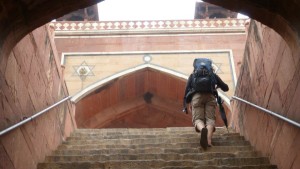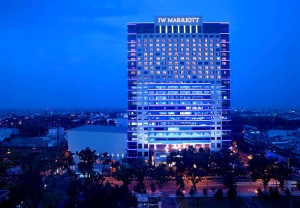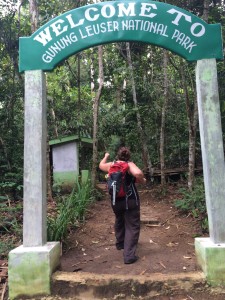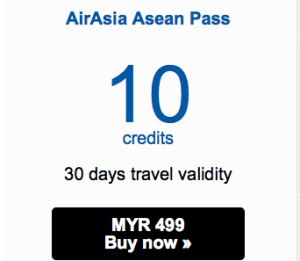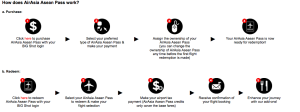Any particular trip can be defined by the actual journeys you take. Whether it is simply the act of getting to your intended destination or the mad rush to book a driver for a reasonable price. we tend to find that it is these that define the story of travel. So in the spirit of this, Jennifer and Mark have decided to take time out from our normal ramblings about weekends away, and list some of our most memorable travel transportation experiences.
Ordos, Inner Mongolia, has had plenty written about it. A ghost city of much beauty in the middle of nowhere, Ordos an apt symbol for the modern real estate development of China. Yet, it is also an airport, a beautiful airport, connected to the truly awful Nanyuan Airport in Beijing.
Nanyuan Airport is a tiny old military base on the southern outskirts of Beijing that is hard to get to and even harder to get away from at the wrong time of night.
They also regularly cancel both departing and arriving flights for no apparent reason. Hence, in 2013 Mark found himself stuck in Ordos following a “short” work trip after flight cancellation upon cancellation. The stated reason – rain; the real reason; no one really knew. Anyway, countless flight cancellations, fifty international journalists baying for blood, and a thirteen hour coach ride from the city next to Ordos, ensured this was a trip to remember for all the wrong reasons. But time heals all wounds, right?
And of course, if you want to read about one of Jennifer’s flight nightmares, you can find it here.
 Part I: Rishikesh – Delhi – Rajasthan (2012)
Part I: Rishikesh – Delhi – Rajasthan (2012)
Mark’s girlfriend is a fantastic traveler. Traveled way more extensively than he has, and often does it without a complaint. However, she is also highly keen to make the most of every moment of every trip and this can lead to friction.
Mark and Quint caught a train from Rishikesh to Delhi, which lasted for over ten hours. Once in Delhi they had two or so hours to spare before the next even longer train journey to Rajasthan. He wanted to rest, and she wanted to see a world heritage site (she is admirably trying to see them all. As in every single one on the globe.) She won. They went to the wrong tomb. Mark sulked. They pretended to smile in pictures. Finally, they found Humayun’s Tomb, the centuries old resting place of Mughal Emperor Humayun. She won again because it is truly spectacular.
This is a central to the Weekend Crossroad philosophy and something we will explore more extensively in future posts. Why sit around an airport or train lounge when there are more adventures to be had? (Read about things to do in a layover in Frankfurt here.)
Part II: Kanyakumari – Thiruvananthapuram (Now we know why they still call it Trivandrum!)
Meanwhile, two years later, Jennifer was determined to overcome the reported horrors of train travel in India (mostly shared by her Indian friends!) As a global traveler from the age of 6, Jennifer was not prepared to be daunted in the slightest by the prospect of booking a ticket. Until faced with the Indian Rail website. And many, many other challenges. So like any savvy traveler, Jennifer and her friend Pete sought the kind assistance of a travel expert — an innkeeper in Kochi, Kerala, who kindly helped them to purchase two first class tickets between Kanyakumari, Tamil Nadu and Trivandrum. Pete and Jennifer noted the distance between the train station and their hotel, inquired as to how long in advance they should arrive at the station, and organized an auto rickshaw ride, and were all set. Or were they.
Greeted by emphatic head shakes at the local train station, Jennifer and Pete were baffled as to why their tickets were not accepted — and why their train was not listed on the schedule. Finally, a kind English-speaking soul explained that in fact, they were at the wrong train station. They could either try to grab a trishaw and rush to the right station (standing a good chance of missing the train) or purchase a new ticket to Trivandrum. Looking at each other, both decided to opt for the new ticket — especially upon realizing that the cost would be mere cents. Then they learned why.
As the train choked and struggled up to the platform and a chaotic mad dash of humanity ensued (where DID all these people come from? They could have sworn that there were not this many people in the station!), Jennifer and Pete helplessly looked around for a place to sit. Jennifer seriously considered abandoning Pete for the calmer looking women-only car, or hiding in the baggage car, but was soon convinced by Pete that this was NOT in the spirit of weekend crossroad adventure. They happened across a nice local family who somehow managed to squeeze 1.5 seats out for our two hapless travelers. Then Pete and Jennifer learned why their tickets were so cheap.

Jennifer and fellow wanderer Pete explore the southern-most tip of the subcontinent in Tamil Nadu. Their new friends help take a rather cramped selfie on third class rail in South India.
First, there was no air conditioning. Indeed, there was barely any air circulating in the cramped car. Sitting as closely as possible to the window (designed in typical “prison chic” manner with iron bars across it), they managed to get a small breeze. And noticed that in addition to climbing to no more than approx. 40 km an hour, the train stopped at EVERY town, village, and crossing along the way.
But then fantastic things happened. First, the slow pace enabled them to take in the sights in a way that could never have happened at 100+ km/hr. Second, Jennifer was proudly able to take off her “princess prima donna” label for a day. And third, practically ready to gnaw each others’ arms off with hunger upon finally pulling into Trivandrum station, the two discovered a wondrously eccentric and charming coffee house where they enjoyed a scrumptious (and cheap!) lunch.
The lesson? Sometimes mistakes can lead to the best, unexpected adventures.
Pingyao to Beijing (2008)
Traveling on the wonderfully efficient high speed trains between the major Chinese metropolises (metropoli?) of Bejing, Tianjin, Nanjing, and Shanghai, it’s hard to believe that in the not-so-distant past, train travel in China was something between an adventure and a game of chance. In 2007 it was impossible to purchase a round trip train ticket between any two Chinese destinations — you had to purchase a one way ticket to your destination — and upon arrival, immediately queue up for a return ticket. In theory, this system worked. Unless, like Jennifer and her friend Amy, you chose to travel during a major national holiday (in this case, the October “golden week” celebrating China’s National Day.
Ever adventurous, Jennifer and Amy decided it would be fun to take a day trip (involving two overnight train rides) to the ancient city of Pingyao, in the coal-rich (and highly polluted) Shanxi province. They would take a hardsleeper train to Pingyao, arriving in the early morning, and spend the day exploring the walled city before catching another evening train back to Beijing where they would enjoy a lazy Sunday before heading back to work the following Monday. What a great plan! Amy, who is Caucasian, good-naturedly put up with the ceaseless curiosity of our fellow passengers, and being the more experienced Chinese train traveler of the two, made sure that they were second in line for the return tickets. (Chinese trains kindly awake you with a loud PA fanfare before you arrive, bleary-eyed, at your destination.) Money in hand, they approached the ticket window, only to be told that all trains – to anywhere — were sold out until the following week.
Realizing that there was nothing that they could do, Amy and Jennifer proceeded to the historic city center and wandered around. Despite the grey skies and the air so thick with smog that they could taste it, they were taken with the somewhat decrepit charm of the town, particularly when taken in from the top of the city wall.
 By early afternoon they had circumnavigated the major sites and enjoyed a lunch of local steamed dumplings. And realized that it was time to figure out how to get home. Speaking to a local farmer, they learned that the local bus station was not too far away. Climbing into his donkey cart, they headed for the terminal, where they were able to purchase tickets to Taiyuan, the provincial capital. From there, they would catch a cab to the inter-province bus station and catch an overnight bus to Beijing. Not their preferred mode of transport, but at least it would get them home.
By early afternoon they had circumnavigated the major sites and enjoyed a lunch of local steamed dumplings. And realized that it was time to figure out how to get home. Speaking to a local farmer, they learned that the local bus station was not too far away. Climbing into his donkey cart, they headed for the terminal, where they were able to purchase tickets to Taiyuan, the provincial capital. From there, they would catch a cab to the inter-province bus station and catch an overnight bus to Beijing. Not their preferred mode of transport, but at least it would get them home.
Cramming onto a jumper seat in a mini-bus, Jennifer found herself seated between a crate containing a live (and vociferous!) chicken, and the “old woman with the bag of seemingly never ending odoriferous food” — and braced herself for a bumpy 2 hour ride.
In Taiyuan, Jennifer and Amy finally made it to the inter-province bus station, to find a scene of utter chaos. Elbowing their way to the front of the line in true local fashion, they amazingly managed to get the two last tickets for the overnight bus to Beijing. Around them, people in the same boat as they were yelling and crying. But they were triumphant! Heading outside, Jennifer spotted a travel agent. On a whim, she popped in to see if there were any flights to Beijing that night. Amazingly, there were. So for around US $50 apiece, they found a much easier way home.
What to do with the bus tickets? Heading back to the terminal, they looked for the most “worthy” looking candidate. They spotted young man sitting calmly, but dejectedly, in a corner and asked him what was wrong. He and his son needed to get back to Beijing urgently, but there were no tickets left. So they were going to sit in the station until a place on a bus opened up. Jennifer and Amy then sold him their tickets at cost, and with mouth agape and tears in his eyes, he accepted them. Heading to a nearby McDonald’s to drown their sorrows and stress in junk food, they agreed that that was the highlight of their trip.
As the plane touched down at Beijing’s Capital International Airport, Jennifer reflected on how lucky she was to have options — to have both the means and the ability to jump on a last minute flight, while others had to struggle so much to get from Point A to Point B. And she was immensely grateful.
In 2002, Mark and his then girlfriend were traveling around Thailand with her sister. For their journey from Chiang Mai to Bangkok they booked themselves onto a 13-hour bus journey.
The journey was terrifying. Not only was it on mountain passes and in the pitch black, but the bus appeared to have little or no breaks. Speeding up as it went around corners hoping physics would do its part.
One particular stand out moment was pulling into the gas station, Mark and his fellow international travelers demanding to be let off and the bus driver and his associate refusing. Another bus pulled up next to them, full of Chinese tourists. To this day Mark wonders what was going through their heads as they were met with thirty or so people banging against the windows of another bus, clearly petrified. But then Mark’s bus pulled off, never to see them again.
Upon reaching Bangkok, everyone all left the coach without saying a word — too stunned, even to express gratitude for being alive despite all the odds.
Do you have any transit experiences to share?







